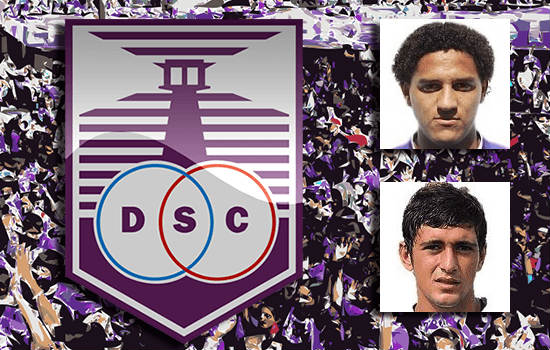 It’s been a pretty torrid few weeks in Uruguayan football. Nacional’s 4-2 home defeat to Newell’s in the Copa Libertadores sparked violence, leading to the arrests of 40 fans and leaving 28 police injured. President Jose Mujica stepped in and announced that enough was enough and police protection would be withdrawn from stadiums. In the ensuing crisis, the directors of the Uruguayan Football Association (AUF) promptly stepped down and rumours – albeit exaggerated ones – abounded that FIFA might even exclude Uruguay from the World Cup this summer. As expected, Blatter quashed such talk and Mujica has since agreed to restore security to domestic football games, hoping that his scare tactic will have made some impact. But the doubts remain. Unfortunately, barra brava violence is a deep rooted problem, not just in Uruguay but across the Rio de la Plata in Argentina and across South America, and shows no signs of abating any time soon.
It’s been a pretty torrid few weeks in Uruguayan football. Nacional’s 4-2 home defeat to Newell’s in the Copa Libertadores sparked violence, leading to the arrests of 40 fans and leaving 28 police injured. President Jose Mujica stepped in and announced that enough was enough and police protection would be withdrawn from stadiums. In the ensuing crisis, the directors of the Uruguayan Football Association (AUF) promptly stepped down and rumours – albeit exaggerated ones – abounded that FIFA might even exclude Uruguay from the World Cup this summer. As expected, Blatter quashed such talk and Mujica has since agreed to restore security to domestic football games, hoping that his scare tactic will have made some impact. But the doubts remain. Unfortunately, barra brava violence is a deep rooted problem, not just in Uruguay but across the Rio de la Plata in Argentina and across South America, and shows no signs of abating any time soon.
This off-field malaise has been compounded on the field too by the Libertadores performances of the country’s two biggest sides and eternal rivals: Nacional and Peñarol. Nacional, admittedly drawn in what was dubbed the ‘Group of Death’ alongside Gremio, Newell’s and Atletico Nacional, finished rock bottom of Group 6, losing all three home games and picking up only one point on their travels. Peñarol, in an altogether kinder group, have fared only slightly better with one win and two draws but were eliminated at the group stage for the third successive year running since reaching the final in 2011. However, one side still flying the flag for Uruguay are Defensor Sporting.
The club based in Parque Rodo in the south of Montevideo are the third most successful club in the country but its four league titles are dwarfed by the 38 and 33 of Peñarol and Nacional respectively. Despite this gulf in historic achievements, they are outclassing their lofty neighbours on the continental stage this season. Defensor bounced back from an opening away defeat to Universidad de Chile to thrash Real Garcilaso 4-1 and then spectacularly beat reigning Brazilian champions Cruzeiro 2-0. A 2-2 draw away in the reverse fixture at the Mineirão was followed with a solid 2-0 win away at altitude to Garcilaso that left them needing only a draw at the Estadio Luiz Francini against La U to qualify, a result they duly achieved to ensure they topped a tricky group five with 11 points from 6 games.
Famed for producing talent – the likes of Sebastian Abreu, Diego Perez and Martin Caceres all began their careers at the Violeta – their Libertadores success has fittingly been based on youth. Their squad is packed with a number of players who have represented Uruguay at various age levels, many of whom featured heavily in the U20 squad that finished as runners up at the U20 World Cup last summer. Defender Gaston Silva captained that U20 side in Turkey that was a penalty shoot-out away from lifting the trophy and which also contained midfielders Leonardo Pais and Federico Gino as well as the trio of former graudates Diego Laxalt, Gianni Rodriguez and Diego Rolan, now at Inter Milan, Benfica and Bordeaux respectively. Furthermore, Ramon Arias, Adrian Luna and Matias Jones were all members of the 2011 U20s and Martin Campana was starting goalkeeper for the Olympic squad at London 2012. Young defenders Matias Malvino and Emilio Zeballos were part of the Defensor side that finished 2nd in the 2012 U20 Libertadores and are now getting regular first team action, as is 18-year-old Mauro Arambarri – one of six Defensor youngsters called up to the latest U20 Uruguay squad. Los Tuertos fine tradition of nurturing the talent from its semillero (literally seedbed) is alive and well and they are reaping the benefits.
But it is two young players in particular who are really standing out. Giorgian de Arrascaeta, a 19-year-old playmaker, was another of the young Charruas who shone at the U20 World Cup and the No.10 has carried that form into this season. Nimble, technically gifted with brilliant vision and dribbling ability, De Arrascaeta possesses that rare knack of threading a killer through-ball or conjuring up a moment of game-changing magic. As well as his seven league goals this season, he has particularly caught the eye with some dazzling Libertadores displays. He produced a fabulous assist in the 2-0 victory over Cruzeiro, chapeau-ing two players before unleashing a perfectly weighted dink in behind the defence, and also scored with a cute finish away against Garcilaso. Linked to Barcelona last summer, his rights were recently acquired by agent Daniel Fonseca for $3.4million to make him the second highest transfer fee received in Defensor’s history. It’s a question of when, not if, he moves to Europe and whoever snaps him up will have a gem on their hands.
De Arrascaeta’s partner in crime, Felipe Gedoz, has arguably been the revelation of the Libertadores so far. The 20-year-old Brazilian attacking midfielder, who joined from third division side Guarani FC de Campinas back in 2010, has enjoyed a meteoric rise after netting four times in the competition, including a spectacular brace against his countrymen in the shock victory over Cruzeiro. Another seven strikes in the league have seen Gedoz become a regular fixture for Defensor and he has forged a great understanding with fellow tyro De Arrascaeta, the duo adding a dynamism and potency in attack that has tormented defences across the continent. Youth aside, coach Fernando Curuchet has complimented the precocious Defensor squad with some wise heads. Club legends Nicolas Olivera and Andres Fleurquin add know-how and balance to the midfield, while Ignacio Risso and Mario Regueiro give the team experienced focal points in attack and allow Gedoz and De Arrascaeta to bomb on from deep.
Having twice made the quarter-finals – in 2007 and 2009 – Defensor certainly have a Sporting (ahem..) chance of repeating that feat. Drawn against Bolivian side The Strongest in the round of 16, they faced a difficult, energy-sapping fixture up in La Paz, losing the tie 2-0, but will back themselves to turn the fixture around. Although an admittedly uphill struggle, with the brio and impetus of youth they will not fear anyone and feel that they are a match for anyone on their day. Regardless of how far they do make it in this Libertadores campaign, the rousing performances of La Farola y La Cometa are proving to be just the tonic for the current ailing state of Uruguayan domestic football.
You can find more at @tomrobbo89
- 2020 Argentinian Primera: Young Players To Watch - November 26, 2020
- Scout Report: Agustin Urzi | Banfield And Argentina Winger - October 13, 2020
- 2020 Brasileirao’s 10 Young Players To Watch - September 10, 2020

























































